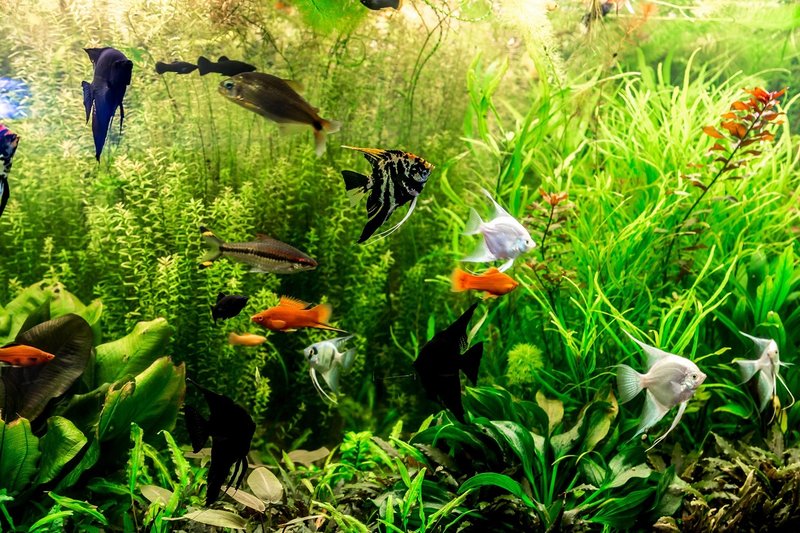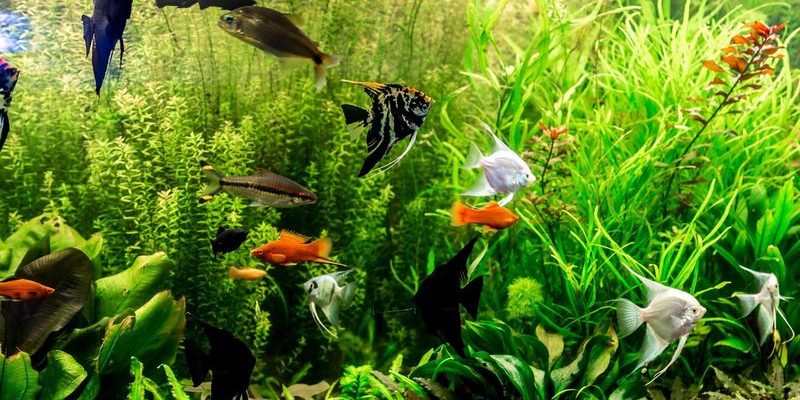
The goal here is to create a peaceful environment where everyone can thrive. Think of the best tank mates as your party’s harmonious guests—each bringing their unique flair but able to coexist without drama. In this guide, we’ll explore some of the best fish and aquatic animals that make excellent companions in a community tank. From colorful schooling fish to calm bottom dwellers, you’ll learn how to mix and match to maintain a serene underwater world.
Understanding Community Aquariums
Before diving into specific tank mates, it’s important to understand what a community aquarium is. A community aquarium is a tank where different species of fish are kept together in harmony. These species should ideally have compatible temperaments, sizes, and environmental needs. Selecting the right combination can promote a peaceful environment where all inhabitants can thrive.
The common factors to consider include water temperature, pH levels, and tank size. Imagine your aquarium as a cozy little neighborhood where everyone has to fit together comfortably. If the water conditions don’t match the needs of your fish, it could lead to stress or aggression. Honestly, no one wants that kind of drama in their tank! So, let’s explore some friendly fish choices that are perfect for community setups.
Top Peaceful Fish for Community Tanks
When it comes to peaceful fish, some species shine brighter than others. Here’s a list of some of the best candidates you might want to consider:
- Neon Tetras: These tiny swimmers bring a splash of color to any aquarium. They thrive in schools of six or more and are usually non-aggressive. Their shimmering blue and red colors can brighten up your tank.
- Guppies: Guppies are hardy, easy to care for, and come in many vibrant colors. They do well in community tanks and enjoy floating plants to hide and explore.
- Corydoras Catfish: These bottom dwellers are known for their peaceful nature. They love to scavenge the substrate for food and are great at cleaning up leftover bits that float down.
- Platies: Platies are another colorful option that gets along well with most tank mates. They are friendly and don’t usually bother other fish.
These species are known for their gentle temperaments and play well with others. Just like the best party guests, they fit into various social environments without causing tension.
Choosing the Right Tank Size
The size of your aquarium is crucial in determining which fish can coexist. If you imagine your tank as a room that hosts a party, a larger room can comfortably fit more guests without feeling overcrowded. Here’s a quick guide on sizing:
- 10-20 Gallons: Perfect for a small community of fish. Ideal for species like guppies and neon tetras.
- 20-50 Gallons: A great option for a more diverse community. You can mix and match different species like platies and corydoras.
- 50 Gallons and Up: Here’s where you can get creative. You can house larger species or a mix of multiple schools.
Keeping your fish comfortable is key. Overcrowding can lead to stress, aggression, and health issues, so always choose a tank size that suits your fish’s needs. You might be wondering how to calculate what fits where; just remember the rule of thumb: one inch of fish per gallon of water is a safe start.
Compatible Species for Your Community Tank
Not every fish gets along. Some species are known troublemakers, while others are the peacekeepers. Here are some compatible species you might consider adding to your community aquarium:
- Rasboras: These small fish are friendly, easy-going, and swim well in schools, making them compatible with tetras and guppies.
- Otocinclus Catfish: These tiny algae eaters are docile and will help keep your tank clean without bothering other fish.
- Cherry Barbs: Known for their vibrant color and calm demeanor, they do well with various peaceful species like danios and rasboras.
- Endler’s Livebearers: A cousin of guppies, they are colorful and easy to care for, making them excellent companions.
The right mix can create a lively yet tranquil environment. Think about how these fish interact and how their different roles can add to the overall harmony of the aquarium.
Considerations for Fish Behavior
Fish personalities vary widely, so it’s essential to understand their behavior. Just like people, fish can be shy or outgoing. Some species are naturally more aggressive, while others are pretty mellow. Here are a few behavior traits to keep in mind:
- Territoriality: Species like cichlids can be territorial. Avoid pairing them with peaceful or timid fish, as they might feel threatened.
- Schooling: Schooling fish, like tetras, are happiest when they have friends around. Always add them in groups to ensure they feel secure.
- Bully Potential: Be cautious with fish that have a reputation for being bullies, such as certain types of barbs or bettas, when mixing them with smaller or gentler species.
Here’s the thing: observing your fish’s behavior can help you spot any potential issues before they escalate. Don’t be afraid to make adjustments if something feels off.
Creating a Peaceful Environment
A peaceful aquarium isn’t just about choosing the right fish—it’s also about creating a welcoming environment. Proper tank setup is crucial in ensuring your fish live happily. Here are some tips to enhance harmony:
- Plants and Hiding Spots: Live plants and decorations provide hiding spots and reduce stress. They can make your fish feel secure and less likely to show aggression.
- Water Quality: Regular water changes and monitoring parameters like ammonia, nitrites, and nitrates will keep your fish healthy and reduce stress levels.
- Feeding Routines: Establishing a feeding routine can help minimize competition for food. This helps ensure everyone gets their fair share and reduces squabbles.
Imagine your aquarium as a cozy retreat where fish can feel safe and relaxed. Creating that kind of atmosphere can go a long way in ensuring everyone gets along.
Setting up a peaceful community aquarium can feel a bit like pulling together a diverse group of friends for dinner. When you choose the right fish and ensure they’re compatible, you can create a serene environment where everyone thrives. Remember to consider factors like tank size, fish behavior, and the environment you create.
With careful planning and attention to detail, you can enjoy a stunning, harmonious aquarium. After all, a peaceful community tank is not just visually appealing but also a source of joy as you watch your aquatic friends interact. So dive into the world of fishkeeping and start crafting your underwater haven today!

